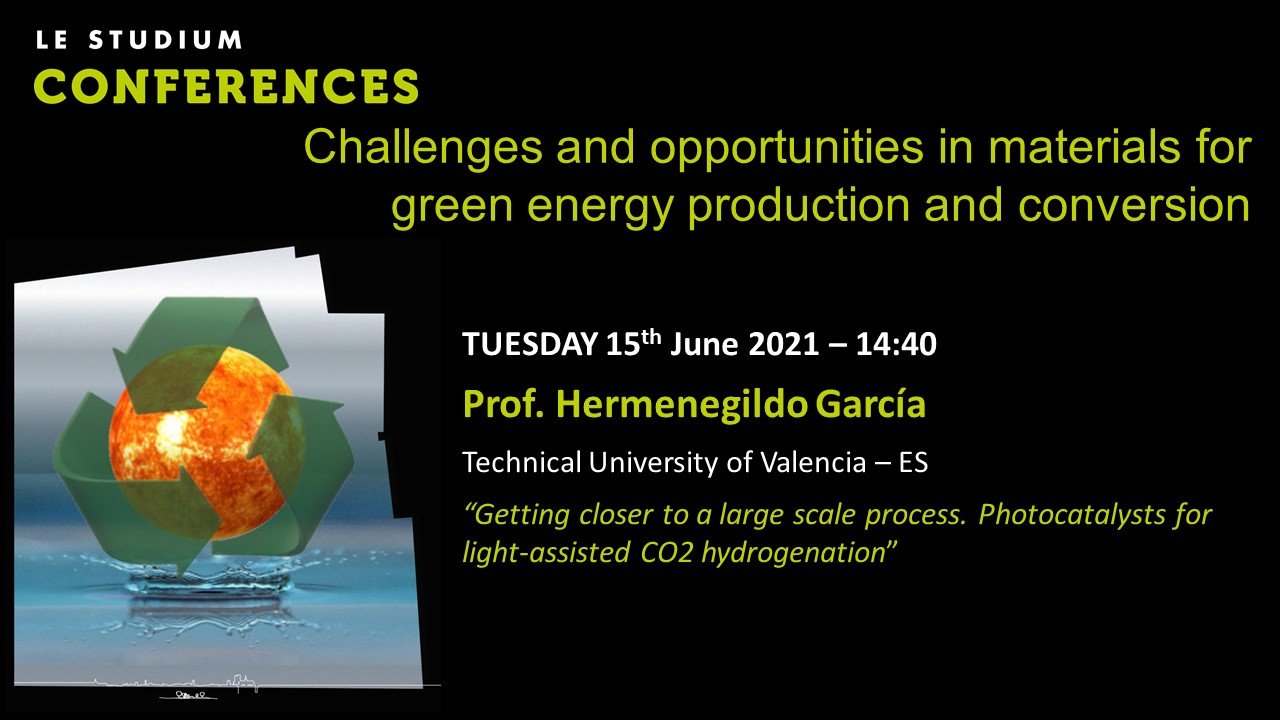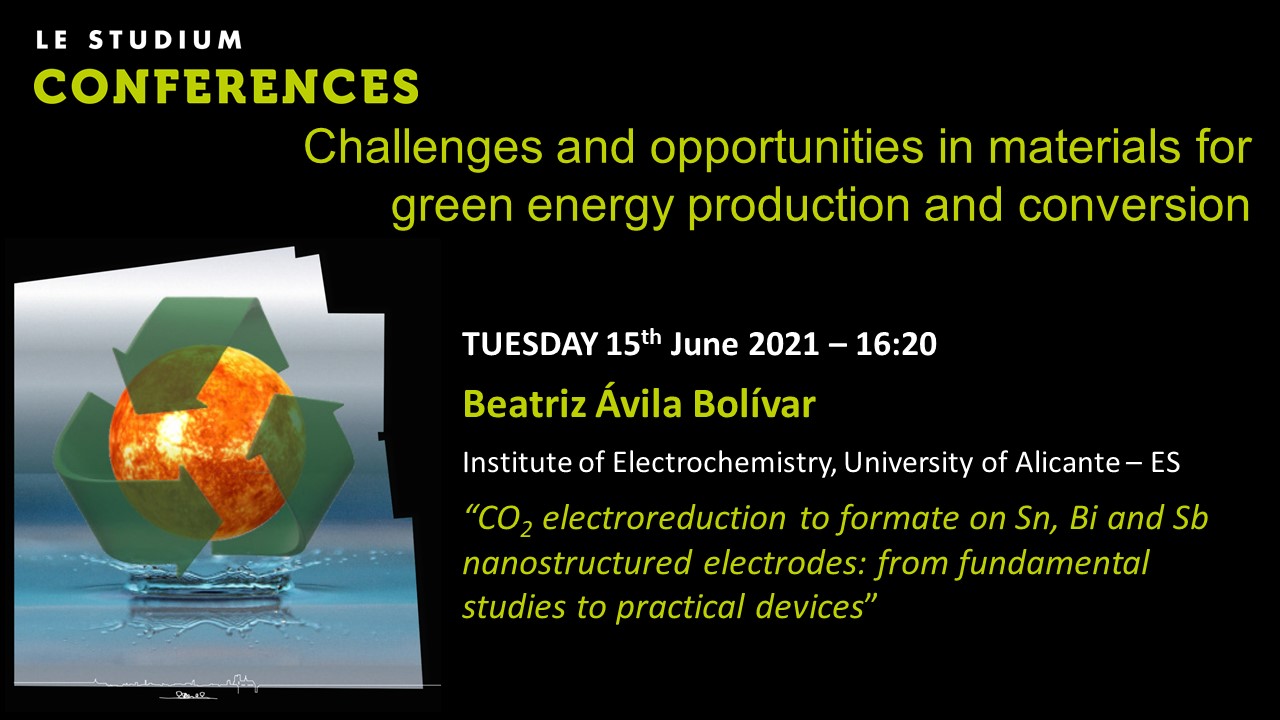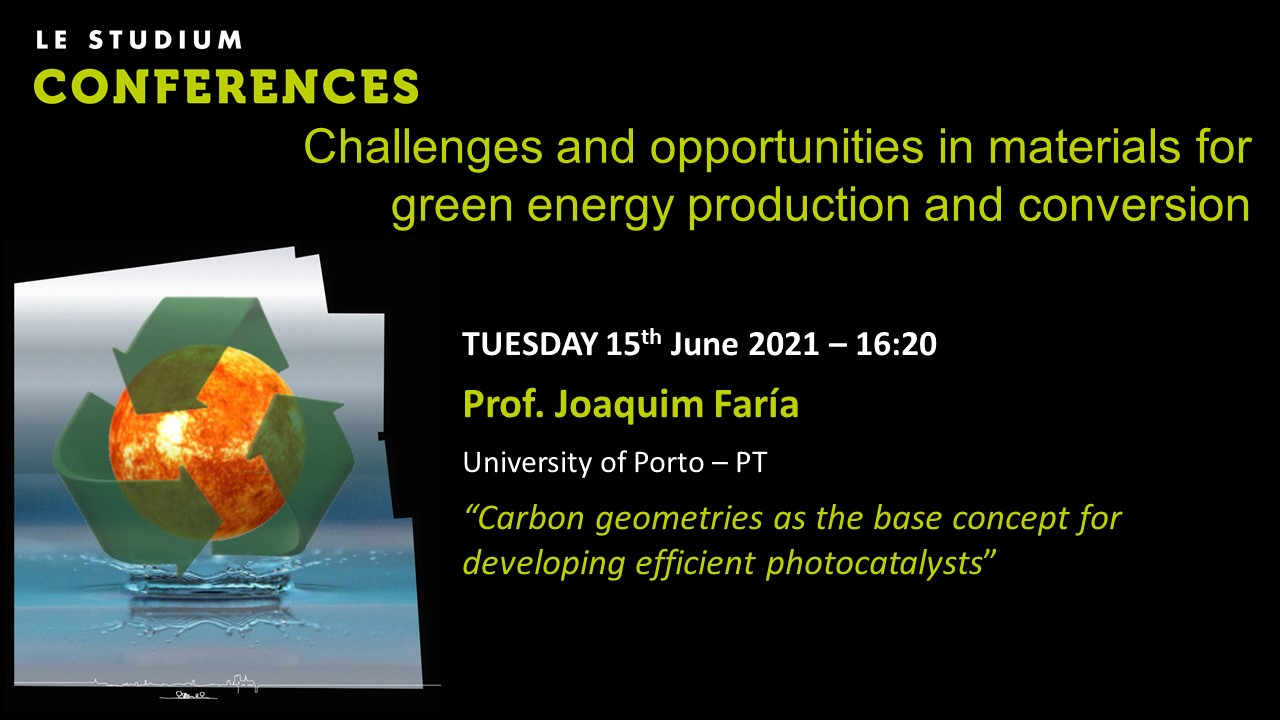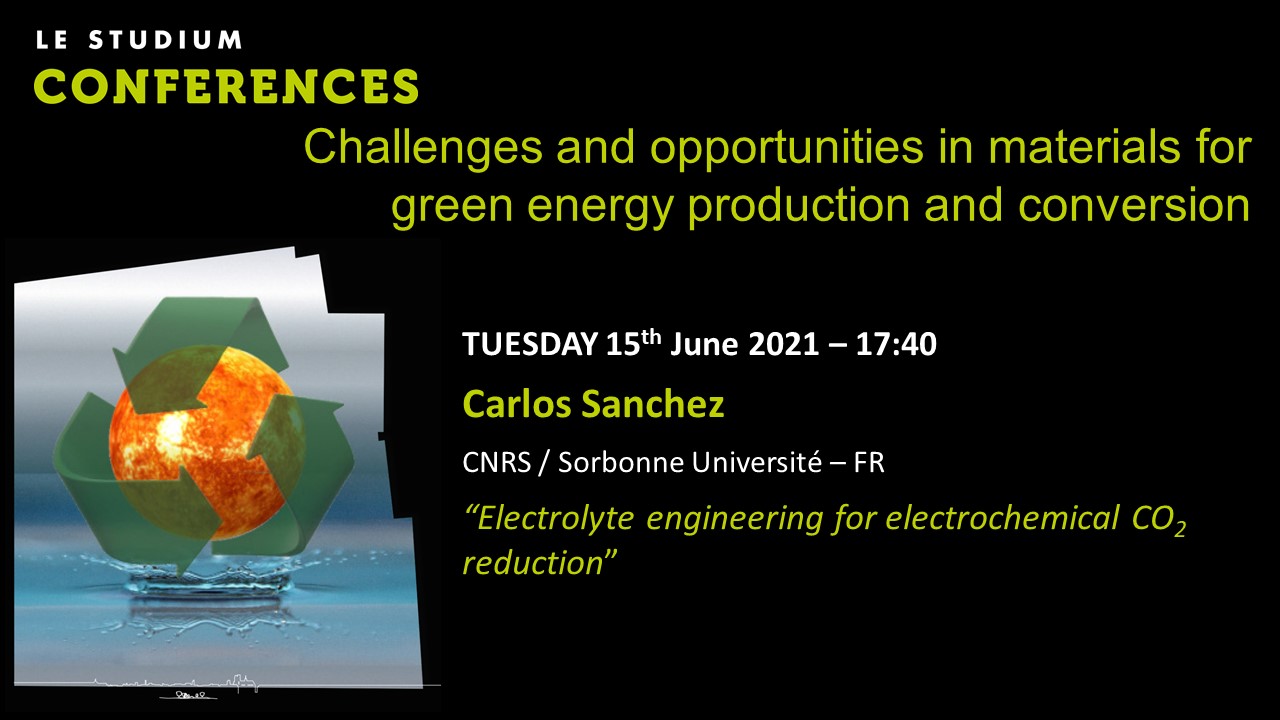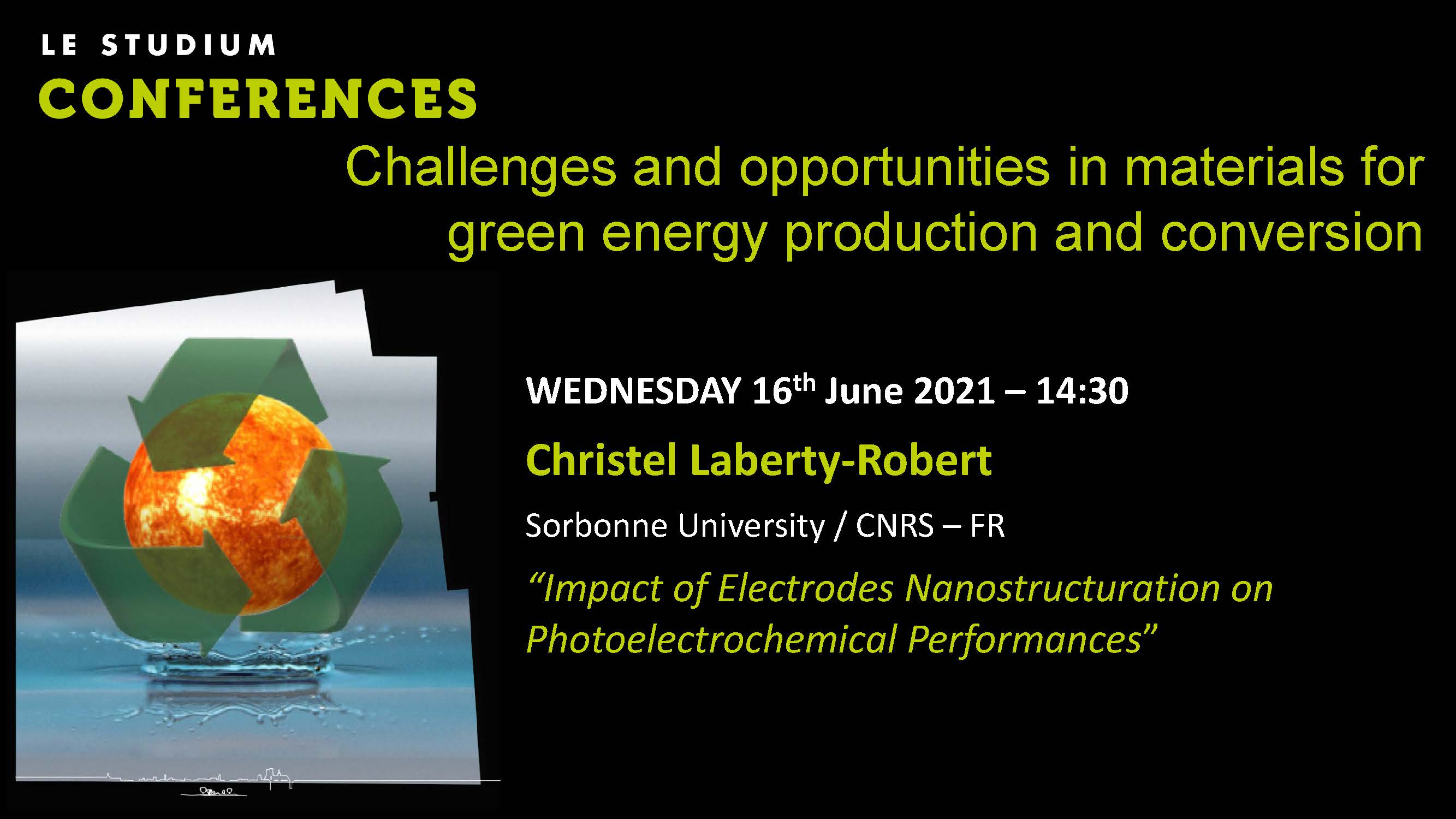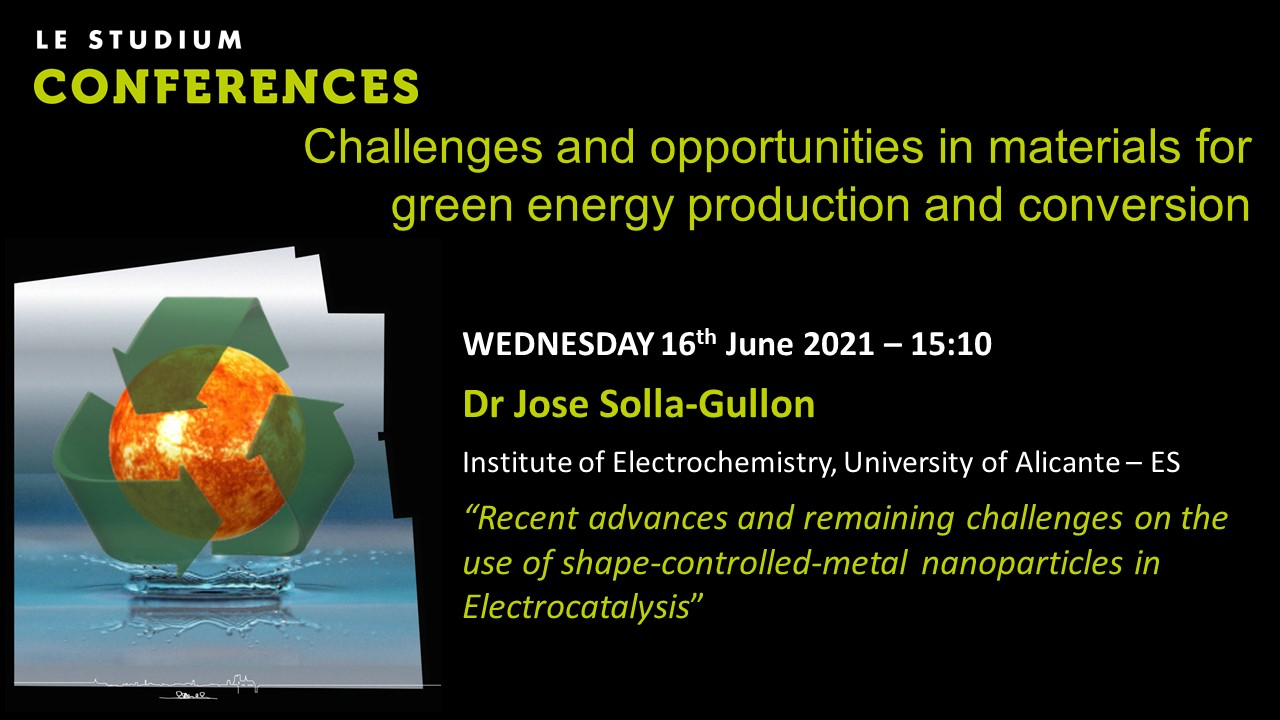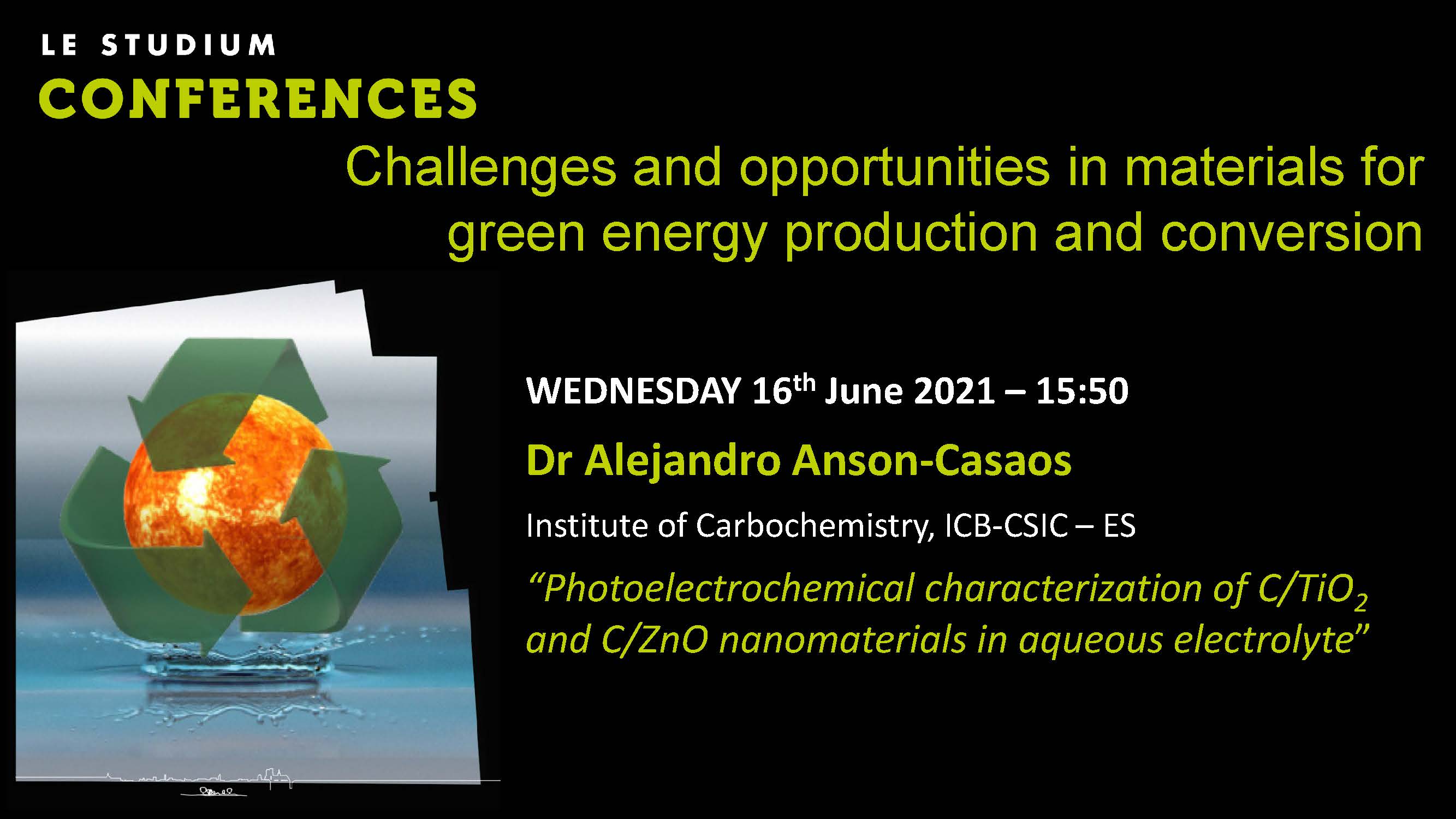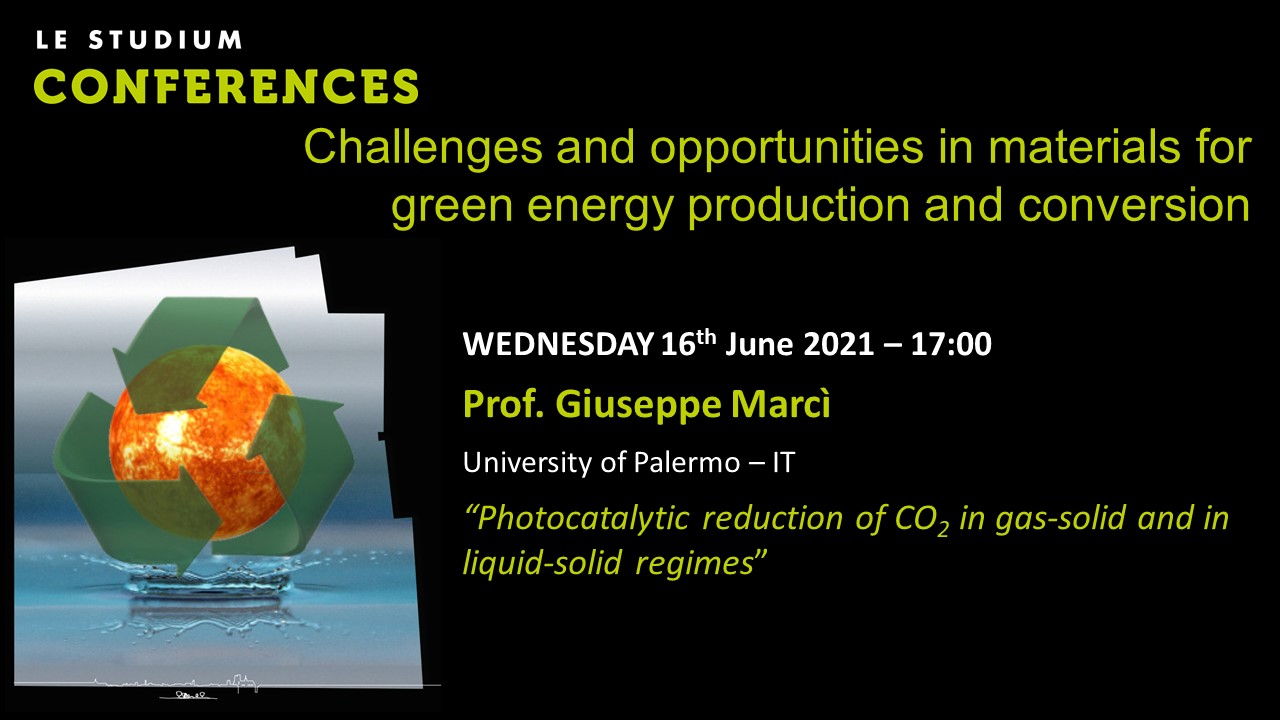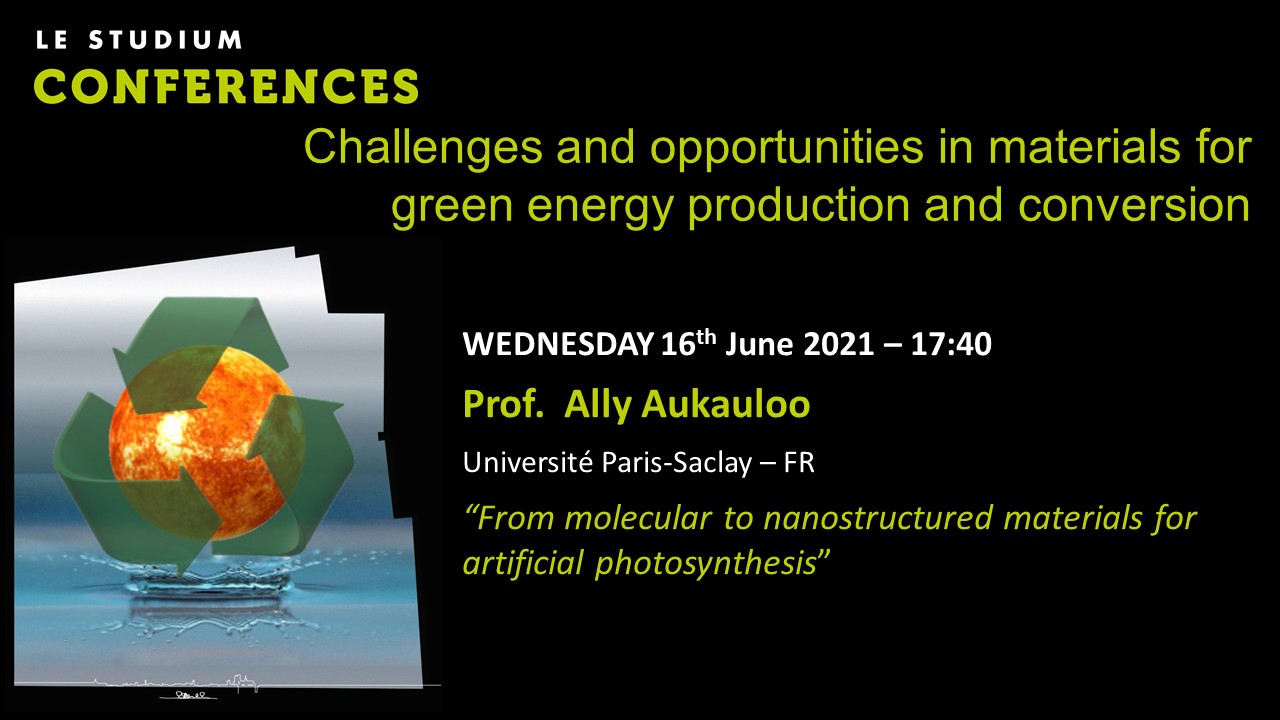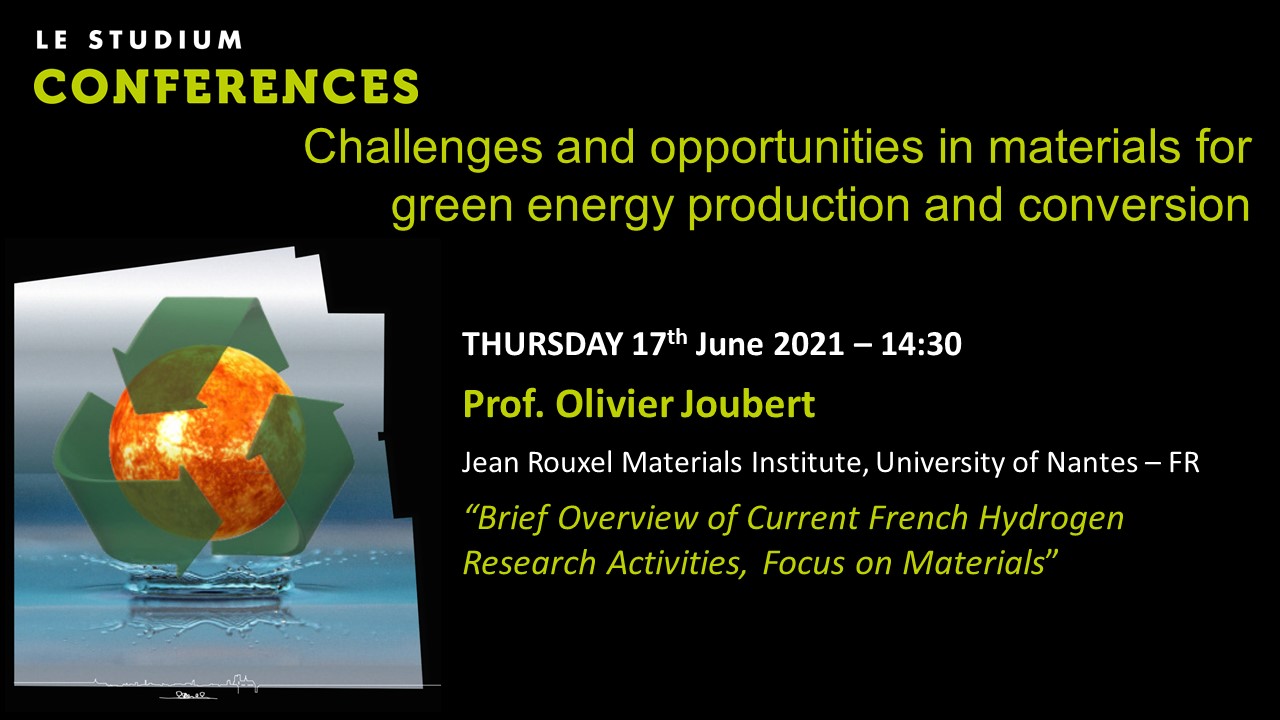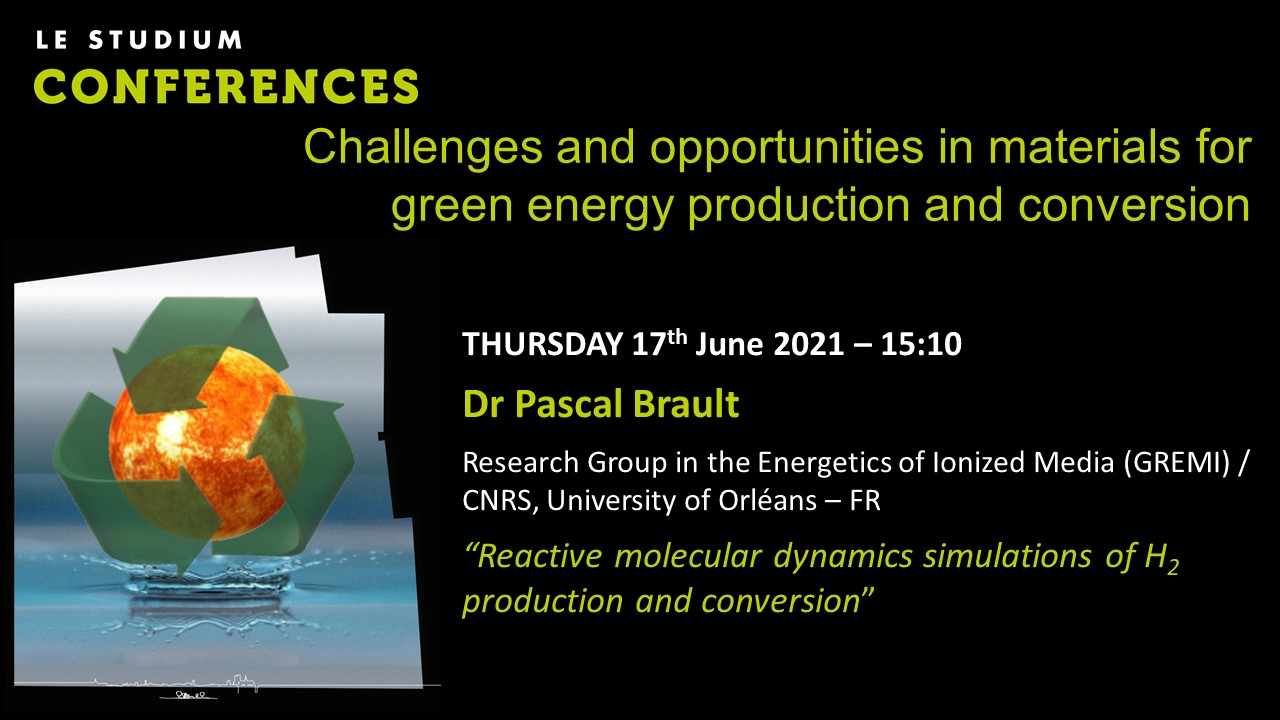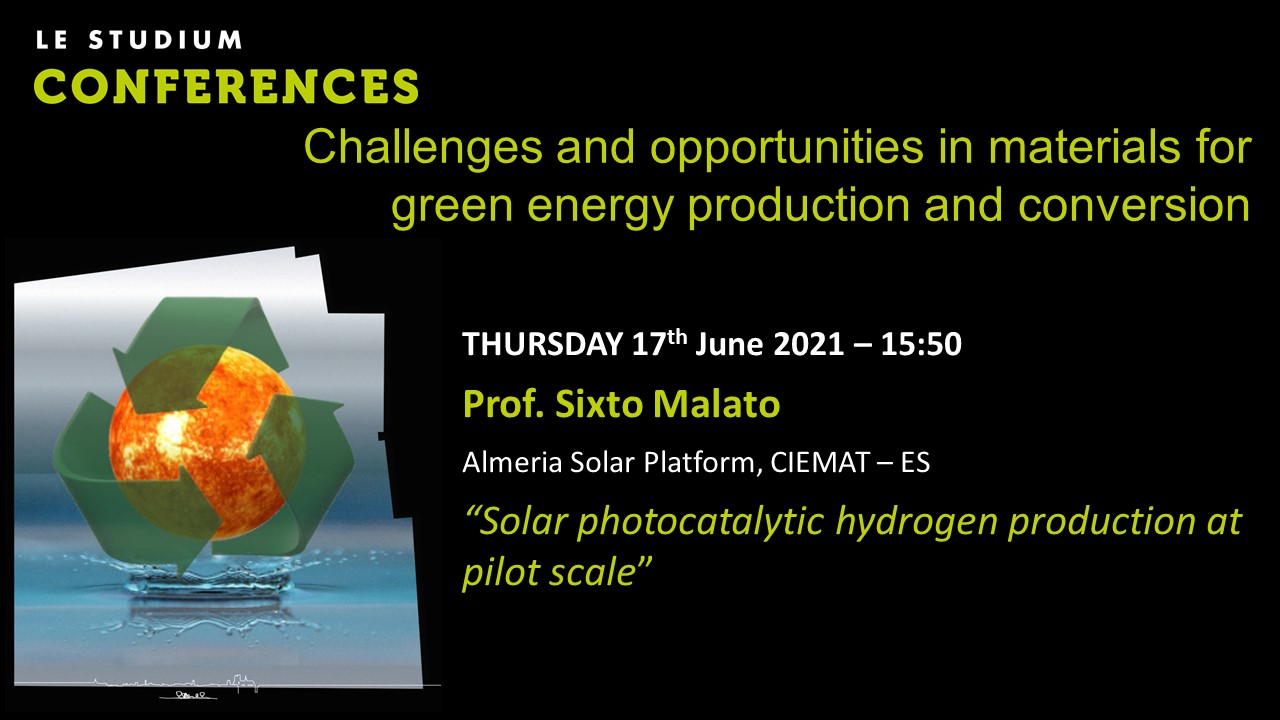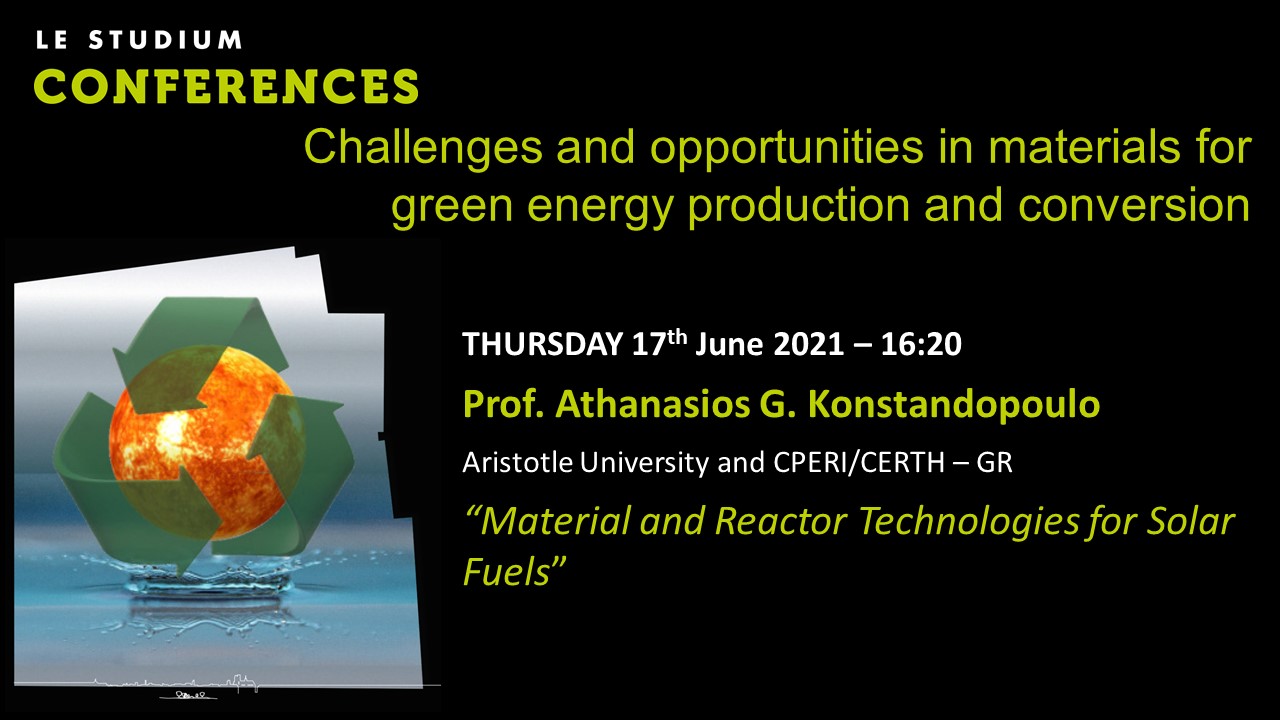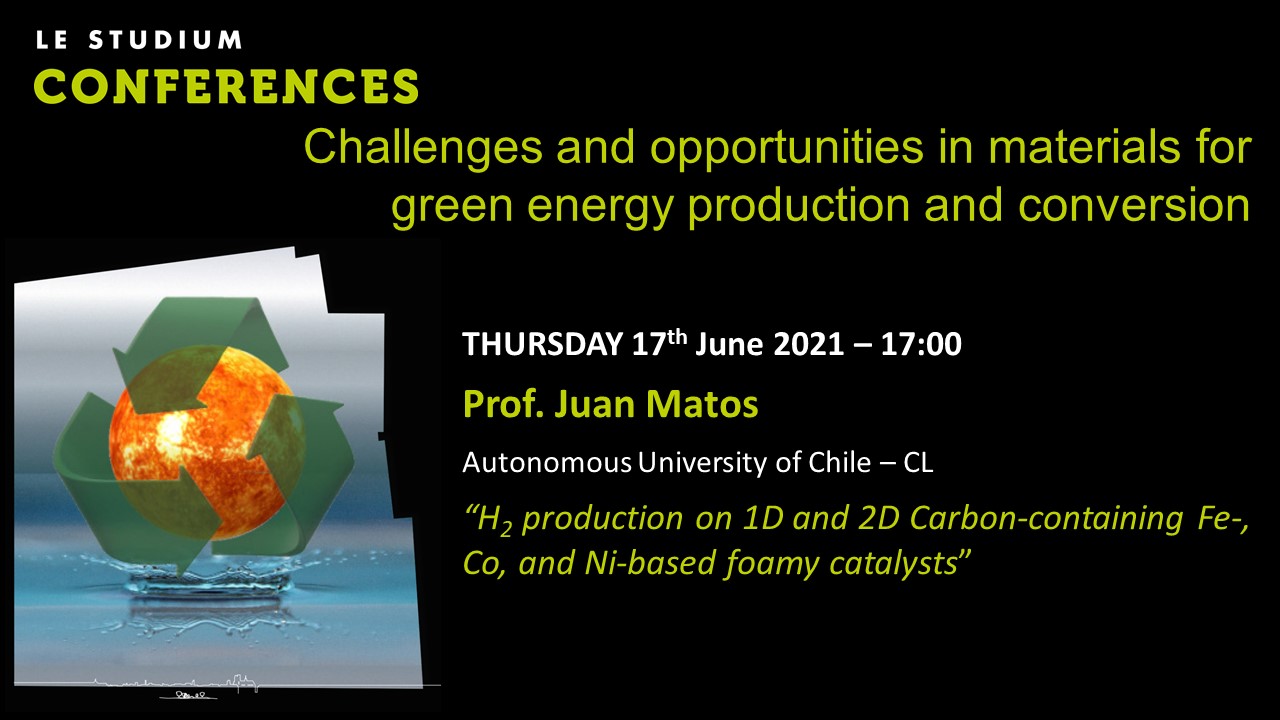Challenges and opportunities in materials for green energy production and conversion
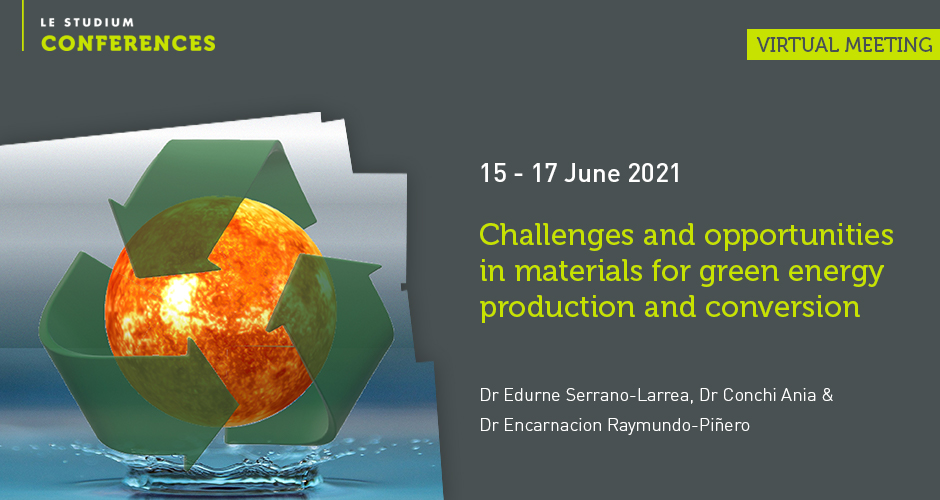
Descriptif
The production of green and renewable energy plays a key role in all future energy scenarios towards the zero-emission transition that has to be tackled in the next 30 years. The rapid inter-conversion of electricity into chemical energy offers an important avenue for the use of renewable energy to replace fossil fuels. The generation of electricity in fuel cells from the electrochemical reaction of H2 and O2, coupled with the photoelectrochemical water splitting to produce oxygen and hydrogen gases and the valorization of CO2 through its conversion into solar fuels are also strongly related with the concepts of circular economy. Hence, the study of materials able to efficiently harvest and transform solar energy is highly necessary. Moreover, due to the intermittent character of the solar energy, adequate energy storage and conversion strategies are also needed. This conference, organized by LE STUDIUM Loire Valley Institute for Advanced Studies, in collaboration with CEMHTI (UPR 3079 CNRS), Conditions Extrêmes et Matériaux: Haute Température et Irradiation, has the aim to gather international and national experts in the field of materials science whose works are contributing to electrochemical and photoelectrochemical approaches for clean energy production and conversion.
This international conference is organised in the framework of the LAVOISIER ARD 2020 Programme.
Read more: http://www.lestudium-ias.com/event/challenges-and-opportunities-materia…
Vidéos
Hermenegildo García - Getting closer to a large scale process. Photocatalysts for light-assisted CO…
There is an urgent need to diminish atmospheric CO2 emissions to meet with the International agreements on global warming and climate change. One of the possible strategies is the utilization of
Jesus Iniesta - Electrochemical and structural characterization of mixed matrix membrane coated ele…
The need for novel membrane coated electrodes (MCE) for the electrochemical reduction of carbon dioxide (CO2RR) may offer advantages in terms of control of reaction, catalytic activity and
Geyla Dubed Bandomo - CO2 conversion with {Mn(CO)3Br} molecular sites into Covalent-Organic Framewo…
Effective large-scale CO2 conversion to fuels or value-added chemicals using renewable energies is critical to reduce our environmental impact [1]. To this end, better understanding of the CO2
Beatriz Avila - CO2 electroreduction to formate on Sn, Bi and Sb nanostructured electrodes: from fu…
The electrochemical reduction of CO2 into chemical products of interest has been considered as an interesting route not only to mitigate climate change but also to store renewable energy in the
Joaquim Faria - Carbon geometries as the base concept for developing efficient photocatalysts
During the past several decades' new carbon allotropes have been accounted for and synthesised. Many notable breakthroughs include exciting works on synthesis, functionalisation, characterisation
Carlos Sanchez - Electrolyte engineering for electrochemical CO2 reduction
Ionic liquids (ILs) in electrocatalysis have attracted a lot of attention from the seminal work of Rosen et al. [1] where they achieved a relevant overpotential decrease for CO2 reduction reaction
Christel Laberty-Robert - Impact of Electrodes Nanostructuration on Photoelectrochemical Performanc…
Hydrogen is presented by some industrialists and managers as a potential pillar of the ecological transition, particularly in the context of transport (hydrogen-powered cars, hydrogen-powered
José Solla-Gullon - Recent advances and remaining challenges on the use of shape-controlled-metal n…
The incorporation of shape-controlled metal nanoparticles in Electrocatalysis is contributing significantly to a better understanding of the correlations between surface structure and
Alejandro Anson-Casaos - Photoelectrochemical characterization of C/TiO2 and C/ZnO nanomaterials in…
Carbon nanostructures, including single-walled carbon nanotubes, reduced graphene oxide, and carbon dots, are inserted in TiO2 and ZnO photoanodes with the aim of improving their activity. For the
Giuseppe Marci - Photocatalytic reduction of CO2 in gas-solid and in liquid-solid regimes
The increasing CO2 level in the atmosphere is a global environmental problem; therefore, the development of efficient catalytic processes for CO2 reduction is a challenge. Heterogeneous photo
Ally Aukaloo - From molecular to nanostructured materials for artificial photosynthesis
Inspired by chemical subtleties at the active sites of enzymes dealing with the CO2 management in our biosphere, we will discuss on how hydrogen bonding and electrostatic effects may thrive the
Olivier Joubert - Brief Overview of Current French Hydrogen Research Activities, Focus on Materials
Twenty years ago, the French scientific community working in the field of hydrogen, started to federate under the leadership of the CNRS. It took the form of successive Research Grouping (GdR)
Pascal Brault - Reactive molecular dynamics simulations of H2 production and conversion
Since H2 production and conversion efficiencies can be improved and monitored at the molecular scale, reactive molecular dynamics simulations (rMDS) are expected to be of great promise for
Sixto Malato - Solar photocatalytic hydrogen production at pilot scale
Solar energy is well-recognized as a sustainable and clean energy source. Among the various approaches to solar energy conversion, solar-driven hydrogen production is one of the most promising ways
Athanasios G. Konstandopoulos - Material and Reactor Technologies for Solar Fuels
The synthesis of carbon-neutral/zero-carbon footprint fuels via solar thermochemical processes (“Solar Fuels”) represents a promising approach for the realization of a sustainable energy future.
Juan Matos - H2 production on 1D and 2D Carbon-containing Fe-, Co, and Ni-based foamy catalysts.
C-containing Fe-, Co-, and Ni-based catalysts have been synthesized from the controlled pyrolysis of saccharose. The topological properties of the 2D materials were significantly different from

